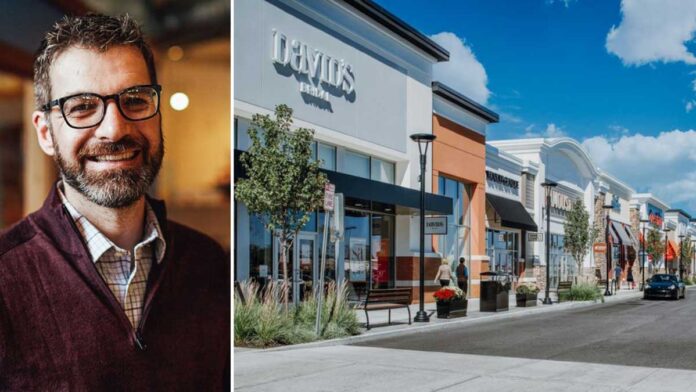To unlock the potential of small format stores, store designer James Owens shares three essential tips for retailers to create an exceptional customer experience.
The retail landscape is witnessing a rapid shift towards smaller store formats, with prominent brands such as Express Edit, Market by Macy’s, and Bloomingdale’s Bloomie’s concept, as well as retailers like Kohl’s, Ikea, Publix, Barnes & Noble, and Sprouts, embracing diminutive offerings.
This trend is propelled by various factors, including:
- The evolving preferences of shoppers who increasingly opt for online shopping and convenient home deliveries;
- The need among retailers to reduce labor and occupancy costs;
- Greater awareness among retailers of “choice paralysis”—the phenomenon of consumers feeling overwhelmed by too many SKUs;
- The availability of self-checkout technologies that save space and labor. Footprints could shrink even further if cashier-less, AI-driven stores catch on.
While smaller formats offer opportunities to enhance operating efficiency and tap into new markets, it is crucial for retailers to prioritize the customer experience and ensure that these new prototypes are not perceived as lesser versions of their larger counterparts.
To accomplish this, veteran store designer James Owens of HFA Architecture & Engineering, shares three essential tips that leverage thoughtful and integrated approaches to design, architecture, and engineering.
1. Make it a ‘big tent’ conversation:
Firstly, Owens emphasizes the importance of making it a “big tent” conversation. With limited square footage to work with, retailers must carefully consider various aspects, including checkout systems, merchandising and fixtures, consumer-facing technology, and back-of-house operations.
Engaging in multidisciplinary discussions early in the design phase with architects, engineers, interior designers, energy-efficiency and retail technology experts, ESG consultants, leasing professionals, and researchers armed with customer and traffic data, enables retailers to maximize the productivity and impact of every square foot.
By sharing valuable insights, such as customer preferences and inventory data, retailers can collaborate with the design team to create a tailored customer journey that resonates with the target market. For example, understanding whether backpacks or trail-running shoes are the preferred choice among young customers in college towns can significantly influence the store layout and design.
2. Consider how technology could shape the store:
Secondly, retailers must carefully consider how technology can shape the store environment. As advancements in in-store technology continue to evolve, architects and designers can play a vital role in supporting retailers’ plans.
For example, if the retailer intends to utilize roaming store associates equipped with iPads for checkout, it offers the opportunity to eliminate traditional cash wraps and reclaim valuable space. However, careful consideration must be given to traffic flow and the overall customer journey within a smaller store setting. Similarly, implementing online-ordering kiosks can enhance efficiency, but the potential impact on flow and customer experience should be thoroughly evaluated.
Rapidly changing technology and evolving customer habits may introduce novel concepts like Uniqlo-style vending machines or AI-driven, cashier-less systems in small-format retail. Therefore, retailers must remain adaptable and capable of redesigning stores without incurring substantial construction costs.
Architects and engineers can provide recommendations for flexible store designs, incorporating lighter, modular fixtures and design elements that can easily accommodate future technological advancements.
3. Rethink backend systems:
Lastly, the engineering aspect of small-format stores presents opportunities for retailers to achieve environmental and cost-reduction goals. Smaller spaces can be more efficiently heated, cooled, powered, and fire-protected compared to larger stores.
Retailers should explore sustainable options such as heat pumps, solar-plus-battery storage, and next-gen refrigeration systems. Partnering with specialized engineers who understand building codes and utilities can help retailers identify the best equipment and maximize the energy efficiency of smaller store formats.
Additionally, by taking advantage of government incentives and cost savings resulting from efficient backend systems, retailers can allocate resources toward enhancing the overall customer experience. Investing in better-quality lighting, attractive color palettes, and appealing finishes can elevate the ambiance and aesthetics of the store, leaving a lasting impression on shoppers.
Customer Experience is the Priority:
By following these three tips from store designer James Owens, retailers can create exceptional shopping environments within limited spaces. Through multidisciplinary collaboration, leveraging technology, and rethinking backend systems, retailers can unlock the potential of small-format stores and inspire and engage customers, irrespective of store size.
Ultimately, the customer experience should remain at the forefront of retailers’ strategies, ensuring continued success in the dynamic world of retail.


